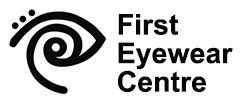Rigid Gas Permeable (RGP) Contact Lens for Myopia Control and Orthokeratology ( Ortho-K )
History of Rigid Gas Permeable (RGP) contact lenses
Rigid gas permeable (RGP) contact lenses were first introduced in the late 1970s, actually a newer technology than soft contact lenses. Most RGP contact lenses incorporate silicone, that is is oxygen permeable which makes them more flexible than PMMA.
RGP contact lenses keep the cornea healthy. In fact, modern RGP contacts allow more oxygen to reach the cornea than traditional soft contact lenses, except silicone hydrogel that are comparable to RGP contact lenses.
What are rigid gas permeable contact lenses?
RGP contact lenses are made of firm, durable plastics that allow oxygen to transmit to our eyes. RGP lenses also are called GP lenses. Modern RGP contact lenses should not be confused with old-fashioned hard contact lenses, poly methyl methacrylate ( PMMA ) that are obsolete.
Modern rigid gas permeable contact lenses are primarily made from fluorosilicone acrylate, introduced in 1987. Modern RGP contact lenses offer excellent eye health as these contact lenses do not contain water like soft contact lenses. RGP contact lenses resist deposits and are less likely than soft contacts to harbour bacteria.
RGP contact lenses clean and disinfect easily, do not dehydrate. These contact lenses are easier to handle, and last longer than soft lenses. They also retain their shape better, provide crisper vision than soft contact lenses. Hence, RGP contact lenses are used for children myopia control, clinically termed as orthokeratology or Ortho-K in short.

Do rigid gas permeable contact lenses hurt?
Modern RGP contact lenses are not the same as the old RGP ones. The modern materials allow oxygen to pass through the lenses and cornea. RGP contact lenses are safe for children to wear overnight for myopia control, orthokeratology or Ortho-K.
Modern RGP contact lenses are made in thinner designs, larger diameters, with more consistently smooth edges. Optometrists are using sophisticated techniques like corneal topographer, to get better cornea alignment with the back of surface of customised rigid gas permeable contact lenses. The new technology allows optometrist to get good results of well-centred RGP contact lenses on the eye, providing good health, comfort and vision. Hence, children are fitted with rigid gas permeable contact lenses for myopia control, orthokeratology ( Ortho-K) for this reason.
RGP contact lenses are usually mistaken by people as “uncomfortable” due to the rigidity as compared to the “soft”. In fact, both soft and RGP contact lenses can provide long-term comfort. However, soft lenses do provide better initial comfort, while RGP contact lenses require an adaptation period due to the size of the lens. Children are the best candidate for RGP contact lenses for myopia control, orthokeratology (Ortho-K) based on health, comfort and vision.
